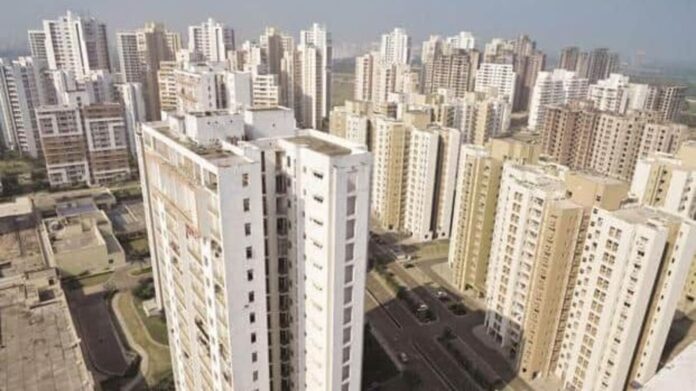This is not the first time such a comment has been made. In 2015, Anshuman Magazine, then chairman and managing director of CBRE South Asia, a real estate consultant, had said: “Despite a housing shortage, around 1.02 crore completed houses are also lying vacant across urban India.”
Now, contrast this with other data points. Recently, Kotak Institutional Equities, a stock brokerage, said that in 2023-24 residential real estate sales stood at 1.1 billion sq ft, 20% higher than 2022-23. Further, property consultant Anarock pointed out that home prices in the top seven cities have gone up 13% per year in the last two financial years.
So, what explains the dichotomy of so many locked flats along with robust growth in home sales and prices? More than 10 million locked flats signals a glut. But a 13% price rise signals good demand and thus a shortage of homes. How do a glut and a shortage co-exist?
First, many individuals like the idea of investing in real estate because it’s a physical asset, which they can touch, see and feel. The same cannot be said about financial assets. Second, conspicuous consumption is at work when it comes to buying real estate for investment. The wealthy need to look wealthy.
One cannot show off a financial investment. Also, those who have more money than they know what to do with end up investing in new homes that they keep locked, in the process ensuring that the demand-supply dynamic which is at the heart of any market, does not work properly in this case.
Third, investment of black money in real estate is always a reason. Fourth, favourable tax treatment of income from real estate incentivizes people to invest in it. Fifth, with the stock market having gone from strength to strength, high net-worth individuals are diversifying some of the gains made from stocks by buying homes.
Sixth, the rental yield—a flat’s annual rent divided by its market price—is only around 1.5-2%, which disincentivizes renting out property. Seventh, some investors fail to calculate real returns from investing in real estate.
Typically, they tend to look at ‘returns’ as the difference between one large number, the price at which they buy, and another large number, the price at which they can sell, without taking into account the time value of money, maintenance expenses, property tax and the general risk of owning real estate.
So, how do these locked homes hurt the overall economy? First, they turn a physical asset into a financial one. Investors are not buying a home to live in, but buying to flip it. Second, locking up homes for the purpose of flipping drives up prices and makes things difficult for those who want to buy homes to live in. Look at the joke that “affordable housing” has become.
Third, high home prices impact the other spending decisions of those who buy homes to live in. It also leads to lower financial savings. Fourth, it leads to cities over-expanding, requiring longer commute times and delivering a lower quality of life. Fifth, it raises the question of whether a capital-deficient country like India should incentivize the building of locked homes.
Sixth, the making of things like cement, glass, plastic, steel, ceramics, etc, which go into the building of homes, involves the emission of greenhouse gases. There is also construction dust. If no one is living in these homes, then what’s the point?
So, what’s the way out? First, capital gains from real estate need to be taxed at the marginal rate of tax, the same way as salary income or interest on fixed deposits. If that’s too radical a proposal, then at least the period of holding for long-term capital gains—which allows inflation to be taken into account while calculating them—should be significantly more than 24 months.
Second, as Babu of Naredco suggests, those who keep flats locked should be charged a higher property tax. Similarly, locked flats can be assigned a notional rent that would make the owner pay income tax on it. This would incentivize a few owners to rent out or sell their locked apartments.
Of course, such moves are not easily executable, but with the government collecting more data, things can only get better. Earlier this year, income tax notices were sent out to salaried employees claiming to pay a higher rent than they actually did.
Third, the government needs to get a proper real estate index constructed, detailed data for which should be available in the public domain a few weeks after the end of a month. The Reserve Bank of India’s House Price Index is a quarterly index. Plus, it’s a 10-city index with cities like Hyderabad and Pune not forming a part of it. Fourth, renting out homes needs to be encouraged.
Of course, all this will only start the process of taming real estate prices in Indian cities and not immediately make homes more affordable. It’s important to understand that this is a complex socio-economic problem and such problems do not have simple solutions that deliver instant results.
#India #housing #glut #shortage #time
